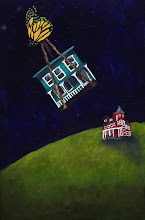


Today at SUNY Old Westbury on Long Island, I was invited to hear a lecture by Suketu Mehta, author of Maximum City: Bombay Lost and Found as part of their "Immigration and the Migration of People" Series. Mehta, who moved from Bombay to Queens when he was 14, wondered whether he could go home again when he decided to return to Bombay twenty years later. Not only was he inspired to write his novel, he discovered that home is not a geographically fixed place; it is a place infused with meaning by the people who inhabit it. He also noted that urban dwellers are universal, whether they are in Paris, London, New York, or Bombay. Today's lecture, organized by Jim Llana, Dean of Liberal Arts and Sciences, and Professor Narayan Hegde, English Dept., focused on writing and immigration. Mehta's current project is showcasing New York City's diverse ethnic composition. Unlike Mehta's early years in Jackson Heights where he was perceived as a general outsider, today's confluence of immigrants inspires unusual alliances and surprising cultural exchanges. After hearing his statistics about immigration, it's clear that globalization has changed our notions of cultural identity and economic borders. In contrast to the immigrants flooding the streets of New York City in the early twentieth century who had little to no chance of ever returning to their homelands again, air travel allows today's immigrant to maintain a relationship with his homeland and his home culture. Even further, in times of economic uncertainty, there is always a very real possibility that an immigrant's child might find better professional placement back home.
It was perhaps Mehta's eloquence, however, which was most powerful: "Human beings struggle under the heavy foot of history." Speaking about topics as wide ranging as Catholic Schools to Gandhi's revolution, Mehta's lecture today proved to be an enlightening intellectual and cultural exchange.





No comments:
Post a Comment